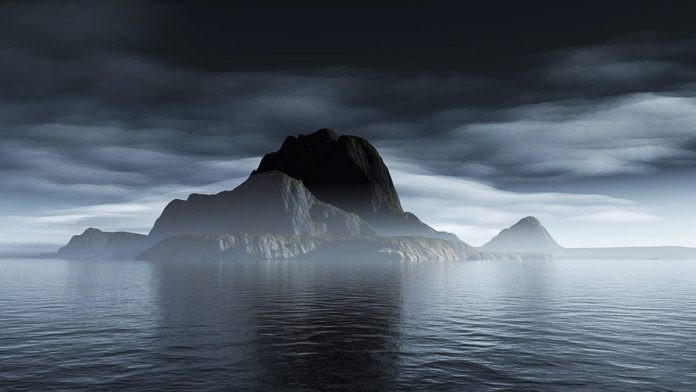An eerie island in the South Shetlands has been largely abandoned for decades after a catastrophic event forced its inhabitants to flee. Deception Island in the Drake Passage, off the Antarctic Peninsula, was once a hub for whaling and scientific research. The peninsula was first discovered by an English vessel in 1819. It was then visited by Nathaniel Palmer, an American sealer, who dubbed it "Deception Island" because though it appeared to be an island, closer inspection revealed it to be technically a ring around a flooded caldera. The island was formally declared under British control in 1908 and postal services were established, alongside a magistrate and customs officer, The Sun reports. The whaling industry thrived there for two decades until hunters left in 1931 as the price of whale oil was falling, and scientists from Chile and Britain set up research stations there.
The Volcano's Secret
But beneath the island's peaceful facade lay a terrifying secret - it is an active volcano. The island's distinctive horseshoe shape was in fact the result of a violent eruption that occurred 10,000 years ago. Seismic events had occurred throughout its history but it wasn't until the late 1960s that people were forced to leave the area for their safety. An eruption in 1967 saw both the British and Chilean researchers escape unharmed. The British team decided to return but were forced to leave once again when another eruption struck two years later. Many buildings were destroyed in 1969 blast, though some, like the old accommodation block, as well as rotting barrels, whaleboats and whale bones, remain as a reminder of the island's unique story.
A Polar Pompeii
The island has been referred to as the "Polar Pompeii" due to comparisons with the eruption of Mount Vesuvius in 79AD, which devastated the ancient Roman city in southern Italy. Scientists estimate around 2,000 people in the city died, while 300 more are known to have lost their lives in neighbouring Herculaneum - though it is thought the death toll could have been far larger. The island is a time capsule, that preserved Antarctica's history after buildings were abandoned overnight.
A Ghost Town
Part of the South Shetland Islands, Deception Island is horseshoe-shaped and filled with stunning glaciers, penguins, hot springs and the ruins of the historic Hektor Whaling Station. The deceptively pretty island also hides a dark secret - it is just one of two active volcanoes in Antarctica. Its main harbour, Port Foster, is a flooded caldera where ships can sail into the centre. The sunken caldera was first formed after a violent eruption approximately 10,000 years ago. It last erupted in August 1970, as well as eruptions in 1967 and 1969.
The island was first discovered by British Sealers William Smith and Edward Bransfield in January 1820 and was first visited by American sealer Nathaniel Palmer in November 1820. It was the American Palmer who dubbed the island "Deception Island" because of its "normal" appearance. For a short time, Deception Island was the home to the fur-sealing industry in the South Shetlands, however, it was abandoned in 1825 after over-hunting meant fur seals were close to extinction.
A Whaling Hub
The island later became popular for whaling, with as many as several hundred men living on Deception Island during the Antarctic summers. In 1908, the British government formally declared the island to be under British control, and established postal services and appointed a magistrate and customs officer. A cemetery was built in 1908, a radio station in 1912, a hand-operated railway also in 1912, and a small permanent magistrate's house in 1914. The cemetery, by far the largest in Antarctica, held graves for 35 men along with a memorial to 10 more presumed drowned. For 20 years the whaling industry thrived until a new whaling development meant ships were fitted with the necessary technologies to process whales. It meant whaling companies no longer needed to find shelter in the harbours of Deception Island. By 1931, the last factory was closed and the island remained abandoned for another 10 years.
A Legacy of Abandonment
In 1942, an Argentine party aboard the Primero de Mayo visited and left signs and painted flags declaring the site Argentine territory, however the HMS Carnarvon Castle. In 1944, the island was used as part of Operation Tabarin, which was carried out to deny safe anchorages to enemy raiding vessels and to gather meteorological data for allied shipping in the South Atlantic. The first recorded volcanic activity was in 1842, and a visit by American elephant-sealer Ohio, which reported the southern shore was "in flames". However, it was the eruption in 1967 that proved the most destructive. The blast buried Chile's Aguirre Cerda research base which had previously been established in 1955, in ash and rock just north of Whalers Bay at Pendulum Cove. The 1967 eruption also damaged a British base (Station B) that the Royal Navy established in 1944 on the site of the abandoned whaling station. Mud flows from the 1969 eruption destroyed many buildings and engulfed the whalers' graveyard, which held 35 tombs.
A Remnant of History
However, not all the buildings were destroyed by the volcanic activity. The old accommodation block has a slump in its middle, with pockets of snow now gathering next to old desks and rusted ovens. Nearby are rotting whaleboats, timber barrels and a scattering of sun-bleached whale bones. While the island is abandoned once more, it is now a popular tourist destination. It also has two research stations operated by Argentina and Spain during the summer. The island is governed by the Antarctic Treaty which was signed in 1959. There were originally 12 signatories, including Argentina, Australia, Belgium, Chile, France, Japan, New Zealand, Norway, South Africa, the Soviet Union, the United Kingdom, and the United States. As of 2024, there are 57 parties to the treaty, with 29 countries given voting status.
A Glimpse into the Past
Deception Island stands as a stark reminder of the power of nature and the fragility of human endeavors in the face of it. The abandoned buildings and remnants of human activity offer a poignant glimpse into a forgotten era. Today, Deception Island is a popular destination for tourists and scientists alike, providing a unique opportunity to explore the history of Antarctica and witness the enduring impact of volcanic activity on the landscape. The island's eerie beauty and fascinating history continue to captivate visitors, offering a glimpse into a past that is both captivating and haunting.

















